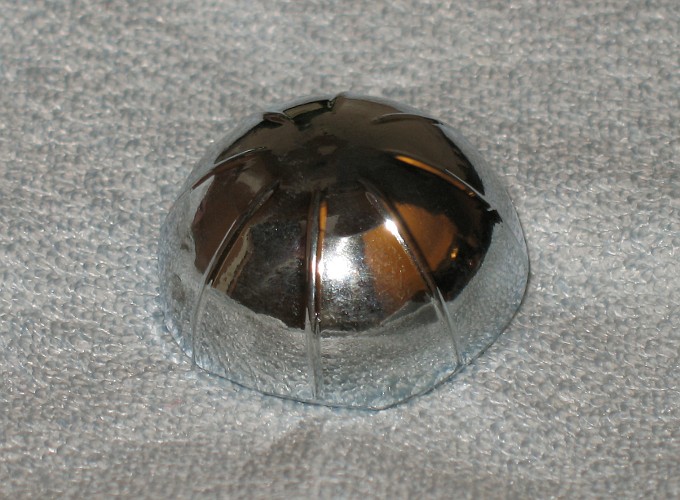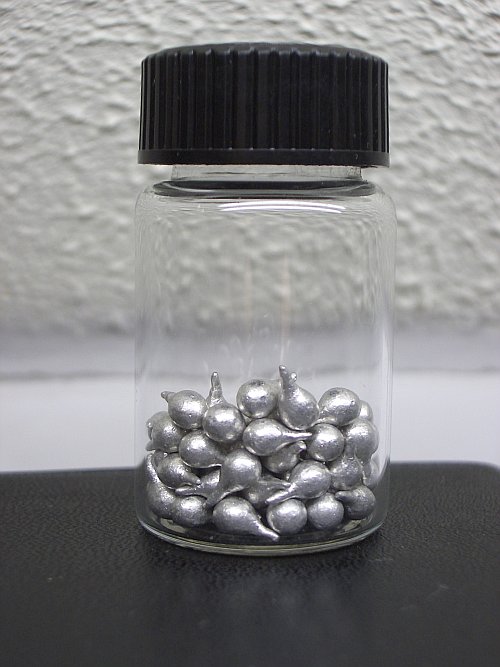


Gallium and indium

 Both of these elements are low-melting silvery metals,
especially gallium, which melts at 29.77 °C. An alloy of gallium and indium is
liquid at room temperature.
Both of these elements are low-melting silvery metals,
especially gallium, which melts at 29.77 °C. An alloy of gallium and indium is
liquid at room temperature.
Molten gallium and indium are extremely wetting and this makes the molten metals look quite different from molten mercury, which does not stick at all to most objects it touches. A piece of molten gallium makes everything touched by it like a mirror, the material being covered by a very thin layer of gallium. The left picture shows some partially molten gallium and this picture perfectly demonstrates the wetting properties of the molten metal. The right picture shows approximately 10 grams of indium metal.
Both metals are moderately reactive and slowly dissolve in mineral acids. The chemistry of these elements is not particularly interesting for the home chemist. Their aqueous chemistry is restricted to the +3 oxidation state.
Gallium and indium frequently are available on eBay as collectors items for chemical element collections. The metals are quite expensive (approximately $1 per gram).
![]()
In their compounds, gallium and indium appear in the +1 and +3 oxidation states, the +1 oxidation state being very unstable. For the home chemist, it only is possible to study these elements as metals, or in their +3 oxidation state. Gallium (III) ions and indium (III) ions are colorless. These elements do not form colorful coordination complexes. For the home chemist, these elements are of limited interest, especially, when their high price is taken into account.
Like aluminium, the elements gallium and indium are amphoteric. Gallium is more amphoteric than aluminium, indium is only slightly amphoteric. Gallium is capable of forming colorless anionic oxo-species very easily. Gallium also dissolves in aqueous alkalies, while indium does not.
Besides the elements themselves, no compounds of these elements are available for the general public at a reasonable price.